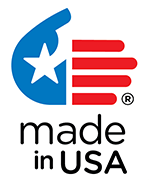Crime Lab Complementor
Cybergenetics complements the crime laboratory, making more science happen
DNA is powerful physical evidence. It can bring justice to innocent victims, or free a falsely accused innocent man. Most DNA evidence is a mixture of multiple people. The mixture can show who was together – victim and suspect – at a crime scene. When mixtures are too hard for crime labs to figure out, life-impacting DNA evidence goes unheard
More science is waiting to happen
When more science needs to happen, Cybergenetics steps in with its TrueAllele® technology. The crime lab can move the DNA all the way down the field, developing superb data. But sometimes it can’t convert that data into useful information. Cybergenetics carries their data across the goal line, finding the DNA identity.
Cybergenetics innovated TrueAllele probabilistic genotyping (PG) twenty years ago. Older mixture methods tried to shoehorn the highs and lows of DNA data into all-or-none categories. With TrueAllele genotyping, accurate probability preserves the crucial shades of gray. Reliable match statistics lend scientific support to whether or not a person’s DNA is in the evidence.
With the advent of validated computer interpretation of forensic DNA evidence, crime labs could start using PG software. But government labs are often boxed in by artificial bureaucratic boundaries, and don’t always report everything that science has to say. Cybergenetics complements the crime lab, taking crime lab data further to release all the DNA information.
Crime labs send cases to Cybergenetics
Crime labs regularly send their DNA data to Cybergenetics for TrueAllele processing. The labs often have their own government-supplied PG software, but they need to go further and make the DNA identification. More science is waiting to happen, and solving the crime is important.
“The mixture is inconclusive due to too many contributors.”
An Ohio crime laboratory developed a seven-person DNA mixture from a plastic bag left at a gas station murder and robbery. The lab didn’t report match statistics for mixtures with that many people, but they knew Cybergenetics could do more. TrueAllele software connected the item to Slater Howell III, who was convicted and sentenced to life in prison. When the lab called on Cybergenetics, more science happened.
Prosecutors send cases to Cybergenetics
Cybergenetics brought modern PG technology into criminal justice. In 2008, the company issued the first TrueAllele report, connecting killer Kevin Foley to a 7% component of deceased Dr. John Yelenic’s fingernails. The 2009 Pennsylvania Frye hearing was the first of many favorable admissibility decisions on PG reliability, affirmed in 2012, based on extensive TrueAllele validation studies.
“Due to the unknown number of potential contributors and the complex nature of this mixture profile, it is not suitable for comparison.”
In 2015, Bradford Cellucci walked into a Ralph Lauren store in a Virginia shopping mall, and bashed a hammer into 18-year-old Bryan Pedroza’s neck, paralyzing him for life. Loudoun County Chief Deputy Commonwealth’s Attorney Nicole Wittmann didn’t wait for more science to happen; she sent the crime lab’s DNA data to Cybergenetics. Complementing the crime lab’s DNA capability, TrueAllele connected the hammer to Cellucci with a match statistic of ten trillion. In August 2020, Judge James Fisher sentenced the assailant to life imprisonment. Leesburg Police Department Lt. Christopher Vogel said, “the hammer was the key.”
Prosecutors send cases to Cybergenetics
Cybergenetics brought modern PG technology into criminal justice. In 2008, the company issued the first TrueAllele report, connecting killer Kevin Foley to a 7% component of deceased Dr. John Yelenic’s fingernails. The 2009 Pennsylvania Frye hearing was the first of many favorable admissibility decisions on PG reliability, affirmed in 2012, based on extensive TrueAllele validation studies.
“Due to the unknown number of potential contributors and the complex nature of this mixture profile, it is not suitable for comparison.”
In 2015, Bradford Cellucci walked into a Ralph Lauren store in a Virginia shopping mall, and bashed a hammer into 18-year-old Bryan Pedroza’s neck, paralyzing him for life. Loudoun County Chief Deputy Commonwealth’s Attorney Nicole Wittmann didn’t wait for more science to happen; she sent the crime lab’s DNA data to Cybergenetics. Complementing the crime lab’s DNA capability, TrueAllele connected the hammer to Cellucci with a match statistic of ten trillion. In August 2020, Judge James Fisher sentenced the assailant to life imprisonment. Leesburg Police Department Lt. Christopher Vogel said, “the hammer was the key.”

Defenders send cases to Cybergenetics
Cybergenetics offers free TrueAllele screening of DNA evidence data. Clients can take a free first look at the potential results before committing to a formal report. Preliminary screening makes it easier to get started with TrueAllele (no cost), decide whether to go forward (favorable evidence), not go forward (unhelpful results), or expand the DNA search (more evidence items).
“Due to the number of potential contributors and low level results, no conclusions will be made regarding the minor DNA component.”
In 2016, a young abused California child was found dead in his mother’s Santa Clara home. Examining almost a hundred evidence items, the crime lab’s limited DNA analysis found some obvious matches. But they missed the broader picture. Based on the lab’s incomplete and misleading DNA evidence, prosecutors charged the mother’s boyfriend, Manuel Lopez, with murder and rape. The state sought the death penalty.
Cybergenetics had previously helped Santa Clara prosecutors secure a DNA conviction in an earlier case. This time, the county’s public defenders contacted Cybergenetics first.
Extensive free TrueAllele screening of 85 items revealed a far different story of the crime lab’s DNA data. The computer found 5 new unknown people on the child’s body, clothing, and other items. Cybergenetics reported 85 new DNA match results that the lab had missed. There was a lot of DNA in “a really dirty house,” said Deputy Public Defender Kelley Kulick, but it didn’t point to the defendant. In June 2020, the jury heard the TrueAllele testimony; they acquitted Lopez on all charges.
Innocence projects send cases to Cybergenetics
Cybergenetics provides unparalleled DNA service to criminal justice, going beyond what most labs report. The company’s TrueAllele testing is scientifically accurate, supported by dozens of validation studies. The computer is unbiased and objective; it doesn’t peek at known answers or take sides. Labs usually run DNA software once; Cybergenetics runs TrueAllele multiple times to establish reproducibility. Most crime labs stop at three or four mixture contributors; TrueAllele technology goes up to ten unknown people. Labs can’t interpret very small DNA amounts; TrueAllele goes down to those levels. Cybergenetics finds reliable match results – whether inclusionary or exclusionary – and states an error rate.
“Due to a low level complex mixture, no conclusive determination can be made.”
Working with the Georgia Innocence Project, Cybergenetics complemented the crime lab’s work. When new evidence was found for Johnny Lee Gates, the company found exclusionary match statistics on four-person mixtures. Gates had been in prison for over forty years. But TrueAllele showed his DNA was not on the belt and tie that bound the deceased. Cybergenetics moved the DNA evidence past the goal line, and into the end zone. The company’s key exculpatory evidence set Gates free
Police investigators send cases to Cybergenetics
When more science is waiting to happen, TrueAllele remains impartial. Cybergenetics recently screened 111 police submissions, across 19 states and Canada. The computer identified 143 suspects. TrueAllele also showed 249 people were not connected to DNA evidence. This free DNA intelligence screening helped direct investigations towards more likely suspects, and away from less likely ones.
“Due to the data being uninterpretable, no comparison can be made to the reference sample.”
Men in a Chevy Malibu fired shots and drove toward a Pittsburgh police officer. The officer had seen the Malibu exchange gunfire with a Lexus. Police recovered a stolen Smith and Wesson handgun thrown from the Malibu. The crime lab developed a four-person DNA mixture, but said the data was too complex to interpret. Cybergenetics resolved the mixture, connecting the gun to a man who then pleaded guilty. TrueAllele also showed a second suspect’s DNA wasn’t on the gun; charges against him were dropped. Better science led to better justice.
Cybergenetics complements the crime laboratory
Cybergenetics complements the crime lab by finding more DNA information in existing evidence data. Crime labs, prosecutors, defenders, innocence groups, and police all seek the company’s help, extending the power of DNA for criminal justice. They don’t wait to make more science happen. They contact Cybergenetics for free TrueAllele screening.
